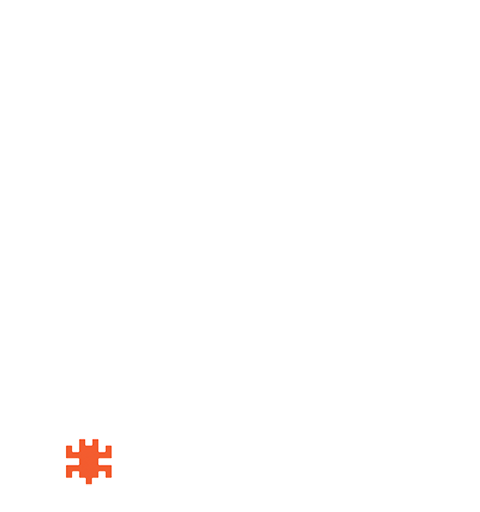Security in cloud computing is of serious concern due to looming threats from emerging vulnerabilities, misconfiguration, and other threats. Having a specific structure in the implementation of the latest cloud security measures aids in reducing the exposure to risks. This is where cloud security architecture comes in.
This article deals with the basics of cloud security architecture, its importance, 4 critical elements, major security principles, and top threats to cloud security architecture.
In this blog, we will take a deep dive into cloud security architecture and cover the following:
- Importance and elements of cloud security architecture
- An in-depth understanding of cloud security services
- The architectural frameworks suitable for cloud security
What is Cloud Security Architecture?
Cloud security architecture is a unified security design comprising all security layers, software, hardware, and infrastructures that protect the cloud environment and its components, such as containers, APIs, workloads, data, and virtual machines.
Why is Astra Vulnerability Scanner the Best Scanner?
- Runs 8000+ tests with weekly updated scanner rules
- Scans behind the login page
- Scan results are vetted by security experts to ensure zero false positives
- Integrates with your CI/CD tools to help you establish DevSecOps
- A dynamic vulnerability management dashboard to manage, monitor, assign, and update vulnerabilities from one place.
- Helps you stay compliant with SOC2, ISO27001, PCI-DSS, HIPAA, etc.
- Integrates with Slack and Jira for better workflow management
- Trusted by the brands you trust like Agora, Spicejet, Muthoot, Dream11, etc.

Cloud security architecture comprises three fundamental features:
- Confidentiality ensures that cloud-based services, assets, and databases are inaccessible and hidden from unauthorized personnel in the organization and hackers.
- Integrity ensures that cloud applications function efficiently and continuously.
- Availability refers to the capability of keeping the cloud system protected from service-related attacks, such as Denial of Service (DoS) and Distributed Denial of Service (DDoS) attacks.
Why Is Your Cloud Security Architecture Important?
The cloud, whether public, private, or hybrid, promises efficiency, convenience, and cost-effectiveness to businesses, enabling them to rapidly make data-informed decisions in real-time and deliver a service to the end-user or customer.
Having holistic security management in the cloud architecture helps in the following:
- Data Protection: Protection of data that is stored, processed, or transmitted within the cloud environment from unauthorized access and or data breaches, theft, or manipulation.
- Business Continuity: Ensuring business continuity through the implementation of measures such as data backups, and disaster recovery in case of any security incidents.
- Maintains Trust: Having a robust cloud security architecture helps build trust and reliability among various stakeholders such as customers, providers, and partners.
- Reduced Risks: Cloud security architecture helps reduce risks linked to cloud threats such as malware, and ransomware, reducing the chances of data loss or theft.
- Maintain Compliance: It helps you comply with various regulatory standards such as GDPR, HIPAA, & PCI DSS by implementing security controls in line with the standard’s requirements.
- Scalability: A well-designed cloud security architecture will not hinder your scaling operations with the cloud, but rather scale along with it.
Four Critical Elements of Cloud Security Architecture
A cloud security architecture comprises the following elements, the awareness of which helps design a better, safer cloud infrastructure or navigate the cloud as a whole:
1. Security boundaries based on the CSA model
The Cloud Security Alliance (CSA model) needs to be thought about at the time of designing and deploying a cloud security architecture. That’s because it defines the boundaries between the cloud service provider’s responsibilities and the customer.
The three components of the CSA model are:
- Centralization involves using tools and services that can be integrated into a single dashboard for easier monitoring and control of the overall security status.
- Standardization creates consistent cloud security models across various services offered in the cloud environment, minimizing their implementation burden.
- Automation allows for the quick deployment of security measures and minimizes human error.
By considering CSA, your business can build a robust, efficient, and easily manageable cloud security architecture that safeguards its cloud-based assets.
2. Mechanisms for data protection
Here, the focus is on ensuring the data stored in the cloud is not accessed, manipulated, or deleted without authorization. Primary techniques that come in handy for data protection are:
- Data anonymization/masking to hide specific data within a database so that it remains confidential.
- Robust access controls to list those who can access what data.
- Regular data backups to prevent data loss at all times.
In addition, deploying a strong data recovery plan ensures business continuity even during outrage incidents.
3. Brokered data storage
This involves using an intermediary to manage and store data across multiple cloud environments. The choice of storage affects the overall security posture of the cloud system. You must, therefore, consider your business use cases and needs.
The brokered data storage approach enables storing data in various locations based on performance, cost, and regulatory requirements and enforcing security policies accordingly.
4. Data encryption
User data transmitting through networks should be appropriately protected against tampering and eavesdropping. There are many ways to enhance your network security and safeguard data at rest such as:
- Audit and map your infrastructure to spot misconfigured firewalls or physical security threats.
- Check that the default passwords have been changed.
- Make sure your firmware and software are up to date.
- Secure your physical premises.
In addition, encrypt the data in transit using methods like:
- SSL (Secure Sockets Layer) and TLS (Transport Layer Security)
- HTTPS (HyperText Transfer Protocol Secure)
- IPSec (Internet Protocol Security)
- SSH (Secure Shell)
You can also use virtual private networks (VPNs) to protect remote users by extending your organization’s private network across a public network. That way, your employees can send or receive data as if their devices were directly connected to your organization’s network.
Threats To Cloud Security Architecture
Prominent threats to cloud security architecture are:
1. Misconfigurations
Misconfigurations in cloud services, storage, or network settings can create security lapses, thus exposing confidential data to unauthorized access or attacks. The leading cause of misconfiguration in the cloud is having inadequate strategies for the management of cloud security. Not having complete visibility over the platform and infrastructure means having to rely on the security controls provided by the CSPs, providing more scope for misconfigurations.
2. Account hijacking
Attackers can compromise your user accounts to gain unauthorized access by stealing credentials or exploiting vulnerabilities in authentication processes. Users with weak or reused passwords, and a lack of MFA, are particularly susceptible to such attacks. These credentials can be obtained through phishing or social engineering. Once a user’s creds are obtained, hackers can access sensitive data, compromise customer credentials, and give full control to their online account.
3. Insecure APIs
Vulnerabilities within the cloud services and its APIs (application programming interfaces) are potential points of exploitation for hackers to try and gain access to your systems or cloud resources. Usually, the APIs provided by cloud service providers are well-documented and easily usable. However, the issue arises when these APIs are not secured by you when in use.
4. Ineffective Access Controls
This refers to having inadequate, weak, or compromised authentication measures such as not having MFA or 2FA implemented. Having weak IAM also causes discrepancies in identity verification and poor management of user privileges. such ineffective access control can lead to your cloud security being compromised through unauthorized access, privilege escalation, and eventually data compromise.
Cloud Security Architecture Threat Stats
Cloud security architecture is not without its own set of challenges, specifically when it comes to security in cloud apps. Here are some stats that support this concern:
- The global average data breach cost is $4.35 million as of 2022.
- After malware, phishing is the second most common reason for data breaches, at 16%.
- Interestingly, 74% of breaches showcase that humans are the weakest link in cyber security.
These figures show that despite the expanding reliance on the cloud, the need for robust cloud security network architecture has never been more serious. It allows businesses like yours to take advantage of all that the cloud has to offer, such as Platform as a Service (PaaS), Infrastructure as a Service (IaaS), and Software as a Service (SaaS) – while mitigating vulnerability and exposure.
If you are considering strengthening your cloud security architecture, read on.

Security Principles for Cloud Architecture
Core principles that should be included within the build of a cloud security architecture include:
- Designed Security: Security controls implemented as a part of the cloud security architecture should be free of misconfigurations. Containers that hold sensitive data should not be accessible to a person unless they are authorized and authenticated to do so.
- Ensured Visibility: Traditional security solutions aren’t compatible with multi-cloud and hybrid cloud architectures. A good cloud security architecture accounts for this and devices security strategies that are compatible with cloud-based infrastructure.
- Centralized Management: The cloud security solutions implemented as a part of the cloud security architecture should account for and ease the duties of understaffed security teams by providing centralized management of cloud security solutions.
- Aid Agility: cloud platforms aid and nurture the development and deployment of new technologies. As such, security should not become a factor that hinders its pace and should be agile. Companies can integrate cloud-native security solutions into their agile SDLC.
- Managed Compliance: Leverage cloud security solutions to manage compliance across a multi-cloud platform. Standards like GDPR and PCI-DSS can be met with the aid of third-party cloud security solutions.
- Security Automation: Automating security is critical for implementing and updating security controls in the cloud environment. Automation of security within your cloud platforms can also help in the identification and remediation of misconfigurations, and other vulnerabilities as quickly as possible.
Best Practices for Cloud Security Architecture
1. Implement Identity and Access Management
Implement identity and access management strategies such as multi-factor authentication and role-based permissions as part of enforcing access policies within your company. Such measures help mitigate security risks, threats, and vulnerabilities such as unauthorized access and account hijacking.
2. Train Your Employees
Your company’s employees are responsible for the individual use of the tech within their company. This makes it important for them to understand all the security risks involved with using these technologies. Educate employees on maintaining strong passwords, identifying suspicious emails, and shadow IT.
3. Implement Cloud Security Guidelines
Establish cloud security guidelines that clearly define the level of access each user should have, the proper use of each service within the cloud, what type of information can be stored in the cloud and shouldn’t be, as well as the technologies that are used by your organization.
4. Secure Your Endpoints
Secure all endpoints and monitor user activity continuously within the cloud environment. Create a strong security defense program by using solutions that provide intrusion detection, firewalls, access controls, and anti-malware.
5. Encrypt All Data
Data is susceptible to attacks in all states, be it during transit, at rest, or even in storage. Therefore encrypting your data is ideal and important for protection against threats and risks.
6. Conduct Penetration Tests
Ensure your company’s security infrastructure is effective by conducting penetration tests. Regular pentests can help in detecting areas of improvement within the cloud security architecture. Tools like Astra Security can help your organization improve its security posture and compliance through automated and manual penetration tests.
7. Ensure Compliance With Relevant Regulations
Use expert and relevant tools that can help with your compliance with relevant regulations and industry standards. Understand the requirements to be cloud-compliant and ensure your vendor is compliant as well.
One data security area that most businesses struggle with is identifying the party responsible an aspect of cloud security architecture. With on-premises data centers and infrastructure, it is clear – you are 100% accountable.
However, in the case of cloud security architectures, you use the Cloud Service Providers’ or CSP’s services, blurring the lines of responsibilities. The shift introduces us to the “shared responsibility model,” in which the CSP and the client (your business) have roles to play in ensuring cloud data security.
While the former physically safeguards its data centers and manages software components across its host operating system, you must take control of your data, user access, and configurations within the cloud.
When you fully understand what you are responsible for, you can:
- Identify where additional security controls or third-party tools are required and allocate resources accordingly.
- Avoid misconceptions that might cause vulnerabilities.
- Be compliant in your cloud operations.
In addition, there is another aspect of a holistic cloud architecture. It provides the tools, mechanisms, and intelligence necessary to safeguard cloud resources, ensuring data confidentiality, integrity, and availability.
Security Architecture Frameworks Suitable For Cloud Security
Security architecture frameworks refer to consistent principles and guidelines that help design, build, and maintain secure systems within cloud environments. With their help, you can align your security practices with business objectives.
Here are the top security architecture frameworks you must know about:
1. Open Security Architecture (OSA)
The OSA framework covers the technical and functional aspects of security controls. It is a valuable toolbox, providing insights into vital security components, principles, issues, and concepts.
OSA assists in making well-informed architectural decisions, forming a solid foundation for robust security systems. However, it is most effective when used to refine an existing security architecture as it does not extensively address broader architectural considerations.
2. The Open Group Architecture Framework (TOGAF)
TOGAF is an enterprise architecture methodology that helps identify the problems that must be solved within your cloud security architecture. It strongly emphasizes aligning itself with a business’s objectives and scope.
However, it refrains from delving into precise methods for addressing security issues, allowing room for tailored implementation by every business.
For instance, the Security Architecture module within TOGAF can be adapted to address cloud-specific concerns. This ensures that security is embedded from the outset of any cloud project.
3. Sherwood Applied Business Security Architecture (SABSA)
SABSA takes a different approach by being a more policy-driven security framework. It sharpens the focus of a security architecture by asking critical questions like: what, why, when, and who.
SABSA ensures that security services are seamlessly integrated into the broader IT management landscape, fostering a holistic security approach that aligns with business needs. SABSA does not get into the specifics of its technical implementation.
Conclusion
Building a cloud security architecture is not a one-time task. It requires constant vigilance, periodic reviews, and a culture of security-first thinking. Use a reputable cloud service provider to create a secure cloud environment that protects your business assets and helps instill trust among your customers, vendors, and stakeholders.
In addition, make sure you conduct regular pen tests to identify potential vulnerabilities in your environment. Astra Pentest provides round-the-clock cloud security testing services to assess digital assets quickly and efficiently detect over 8,000 vulnerabilities.
Find vulnerabilities before the hackers do and manage your entire security from a developer- and CXO-friendly dashboard. Book a demo today if you want to know how Astra Pentest works.
FAQs
What does a cloud security architect do?
A cloud security architect designs and implements secure cloud environments. They assess cloud projects for potential risks, create security policies, integrate security technologies, and ensure compliance with regulations. Their goal is to protect data, applications, and services from potential threats within the cloud.
What are common examples of cloud security architecture?
Cloud security architectures often include encryption at rest and in transit, firewall configurations, secure virtual private clouds (VPCs), identity and access management (IAM), intrusion detection systems (IDS), , and multi-factor authentication. These components ensure data integrity, confidentiality, and availability in the cloud.
How does Cloud Security Architecture for SaaS, PaaS, and IaaS differ?
Cloud security architecture for different types of cloud models vary in the following manner:
1. SaaS: Involved protecting data within the application
varies2. PaaS: Focus is on securing the platform’s infrastructure
3. IaaS: emphasis on securing the entire infrastructure
These different approaches to cloud security architecture in SaaS, PaaS, and IaaS necessitate distinct and customized security measures for each model.
















